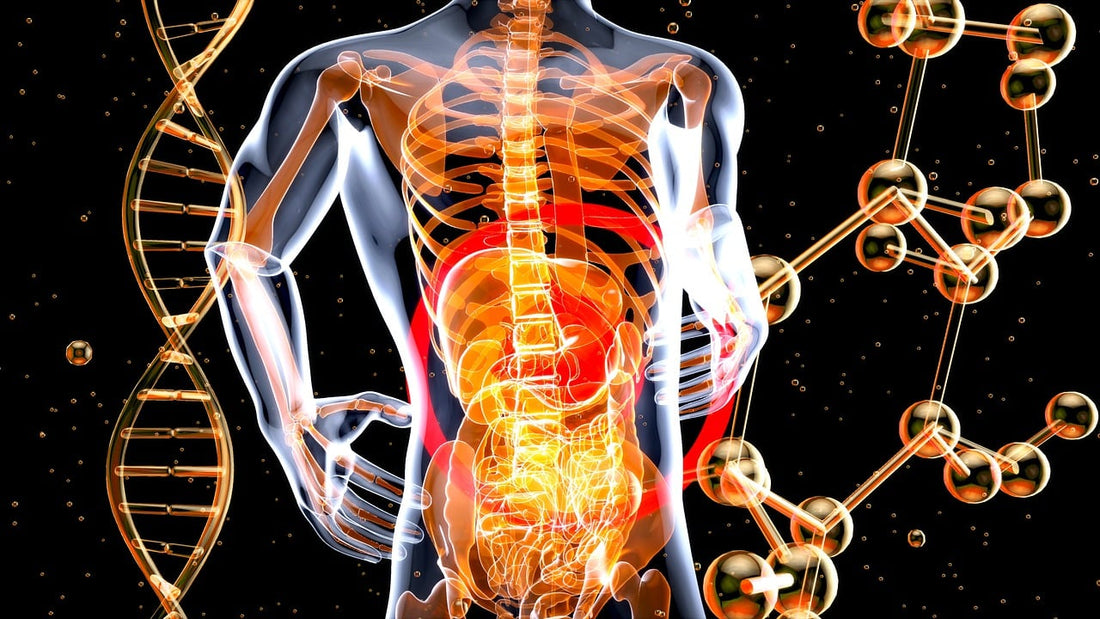The Top 3 Gut Healing Peptides in Research
In the intricate landscape of gut health research, peptides have emerged as promising agents for therapeutic intervention. The gastrointestinal tract, often referred to as the "second brain," plays a pivotal role in overall well-being, influencing digestion, immunity, and even mood. Understanding the peptides that contribute to gut health can illuminate new pathways for treating a variety of gastrointestinal disorders. In this article, we delve into the top gut health peptides: BPC-157, LL-37, and GHK-Cu.
BPC-157: The Healing Peptide
Introduction to BPC-157
BPC-157, short for Body Protection Compound-157, is a synthetic peptide derived from a protein called Body Protection Compound. Initially discovered for its regenerative properties in musculoskeletal tissues, BPC-157 has garnered significant attention for its potential therapeutic effects on the gastrointestinal system.
Mechanisms of Action
BPC-157 exerts its effects through multiple mechanisms, including promoting angiogenesis, collagen synthesis, and tissue repair. In the context of gut health, it has been shown to enhance the healing of various gastrointestinal injuries, such as ulcers and inflammatory bowel disease.
Research Studies Supporting its Efficacy in Gut Health
Numerous preclinical studies have demonstrated the efficacy of BPC-157 in improving gut barrier function, reducing inflammation, and accelerating the healing of gastrointestinal lesions. For example, research in animal models of colitis has shown that BPC-157 administration leads to a significant reduction in disease severity and promotes mucosal healing.
Potential Applications and Future Directions
The therapeutic potential of BPC-157 in gut health extends beyond gastrointestinal disorders. Emerging evidence suggests its efficacy in mitigating the adverse effects of nonsteroidal anti-inflammatory drugs (NSAIDs) on the gut mucosa and protecting against stress-induced gastric ulcers. Future research should focus on elucidating the precise mechanisms underlying BPC-157's therapeutic effects and exploring its clinical applications in human subjects.
LL-37: A Multi-faceted Gut Guardian
Understanding LL-37 Peptide
LL-37, also known as cathelicidin antimicrobial peptide, is a naturally occurring peptide found in various tissues, including the gastrointestinal tract. Initially recognized for its antimicrobial properties, LL-37 has since been implicated in modulating immune responses, promoting wound healing, and maintaining gut homeostasis.
Role in Gut Immunity and Microbiota Regulation
LL-37 plays a crucial role in innate immunity by defending against pathogenic microorganisms and modulating the composition of the gut microbiota. Dysregulation of LL-37 expression has been associated with inflammatory bowel diseases (IBD) and other gastrointestinal disorders, highlighting its importance in maintaining gut health.
Clinical Evidence and Preclinical Studies
Clinical studies evaluating the therapeutic potential of LL-37 in gut health are limited but promising. Preclinical research has shown that LL-37 administration attenuates intestinal inflammation, promotes mucosal healing, and enhances barrier function in animal models of colitis and other inflammatory conditions.
Implications for Gut Health Therapeutics
The multifaceted nature of LL-37 makes it an attractive candidate for the development of novel gut health therapeutics. Strategies aimed at enhancing LL-37 expression or delivering exogenous LL-37 peptides hold promise for the treatment of various gastrointestinal disorders, including IBD, infectious diarrhea, and gut dysbiosis.
GHK-Cu: The Restorer of Gut Homeostasis
Insight into GHK-Cu Peptide
GHK-Cu, or copper peptide GHK-Cu, is a naturally occurring tripeptide composed of glycyl-histidyl-lysine and a copper ion. Widely known for its wound-healing properties, GHK-Cu has recently gained attention for its potential role in modulating gut homeostasis and promoting gastrointestinal health.
Modulation of Gut Barrier Function
GHK-Cu exerts its effects on gut health through various mechanisms, including enhancing epithelial barrier function, reducing inflammation, and promoting tissue regeneration. Studies have shown that GHK-Cu supplementation protects against gut barrier dysfunction induced by stress, inflammation, and other insults.
Anti-inflammatory and Antioxidant Properties
In addition to its role in maintaining gut barrier integrity, GHK-Cu exhibits potent anti-inflammatory and antioxidant properties. By suppressing pro-inflammatory signaling pathways and scavenging reactive oxygen species (ROS), GHK-Cu helps alleviate intestinal inflammation and oxidative stress, thereby promoting gut health.
Clinical Trials and Promising Findings
While clinical trials investigating the therapeutic potential of GHK-Cu in gut health are limited, preliminary evidence from preclinical studies is encouraging. Animal models of colitis and other gastrointestinal disorders have demonstrated that GHK-Cu administration ameliorates inflammation, accelerates wound healing, and restores gut homeostasis.
Comparative Analysis and Conclusion
Comparative Evaluation of BPC-157, LL-37, and GHK-Cu
Each of the three peptides discussed in this article—BPC-157, LL-37, and GHK-Cu—offers unique mechanisms of action and therapeutic potential in promoting gut health. BPC-157 primarily promotes tissue repair and angiogenesis, LL-37 modulates gut immunity and microbiota, while GHK-Cu enhances gut barrier function and exhibits anti-inflammatory properties.
Strengths, Limitations, and Future Perspectives
While preclinical studies have provided valuable insights into the therapeutic potential of these peptides, clinical evidence supporting their efficacy in human subjects is still limited. Future research should focus on conducting well-designed clinical trials to elucidate the safety and efficacy of these peptides in treating various gastrointestinal disorders.
Recommendations for Further Research and Clinical Applications
Exploring the synergistic effects of combining these peptides with existing therapeutic modalities may pave the way for the development of more effective treatments for gut health. Additionally, investigating the potential interactions between these peptides and the gut microbiota could uncover novel mechanisms underlying their therapeutic effects.
In conclusion, BPC-157, LL-37, and GHK-Cu represent promising avenues for research and development in the field of gut health. By elucidating their mechanisms of action and evaluating their therapeutic potential in clinical settings, we can harness the power of peptides to improve gastrointestinal outcomes and enhance overall well-being.


